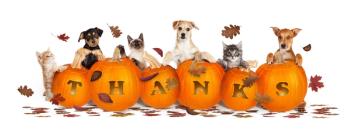
How I learned to cope with euthanizing veterinary patients
Find your outlet to avoid compassion fatigue.
“This is probably the worst part of your job,” may be the most common thing I hear from an owner before I euthanize a pet.
The owner is right-euthanasia is the opposite of why I got into this profession. In fact, it's one of the most devastating experiences veterinarians face. Repeated over and over again, the grief can take a toll. Compassion fatigue is a serious threat that underlies our
I discovered my coping mechanism as the beginning of my career beckoned, and the thought of having the responsibility to end a life weighed heavily on me. I was just finishing my clinical rotations and had accomplished my goal of not killing anything. But now my caseload was about to jump significantly, and euthanasia was about to become part of my job-whether I liked it or not.
I'd made progress coming to terms with patients dying through the years. As a 19-year-old, I spent two hours in the exam room with a deceased cat before I was able to prepare the body for the crematory. I had come a long way through anatomy and necropsy, but I was about to enter a new realm.
I decided that I needed a way to express my feelings that euthanasia was more than stopping an animal's suffering by ending its life. It was sending a soul on to the next life.
A simple prayer was my answer. I'm not a biblical scholar, but I thumbed through the Bible to see if I would stumble upon a relevant verse. I spoke with friends and even Googled it, but I wasn't able to find anything that resonated. So I did the next best thing-I wrote my own prayer.
The words came to me quickly. They felt right, and I became more comfortable with the inevitability of euthanasia. And the inevitable came quickly. For my first euthanasia patient on Flag Day 2004, I said to myself:
"As you enter the kingdom of heaven, you are welcome.
For you give love, and you are loved."
I've recited that prayer to myself for 11 years, and it still holds true. At the very least, it's helped me feel better about that ultimate responsibility. I'm not fatigued. A year ago, the new minister at my church asked me and my wife and if we had ideas on how to bring young people into the church. I knew a prayer service in our United Methodist demonination that involved blessing of the animals. I thought that was something that appealed to anyone with a pet, not just young people. The minister agreed and asked if I would participate in the service.
At first I wasn't sure about standing behind the pulpit-was I prepared to deliver a sermon? As I thought about it, I realized I didn't lack material. I have 11 years of experience and haven't shared the majority of it. We all know that discussing a tough case or how I lost a long-time patient isn't appropriate dinner conversation when my 4-year-old daughter asks about my day. Nor is a party the place to talk about ending a life when someone asks me how business is or what's the coolest case I've seen recently.
The sermon material was already in my head. I just had to put the words to paper. At first, I thought I was taking part in the Blessing of the Pets for the people and their loved ones. But, to be honest, I think I do it for myself too. It's part of my therapy. It's how I cope.
Dr. Andy Rollo is an associate at Madison Veterinary Hospital outside of Detroit, Michigan. He is also a Veterinary Economics Editorial Advisory Board member.
Newsletter
From exam room tips to practice management insights, get trusted veterinary news delivered straight to your inbox—subscribe to dvm360.





